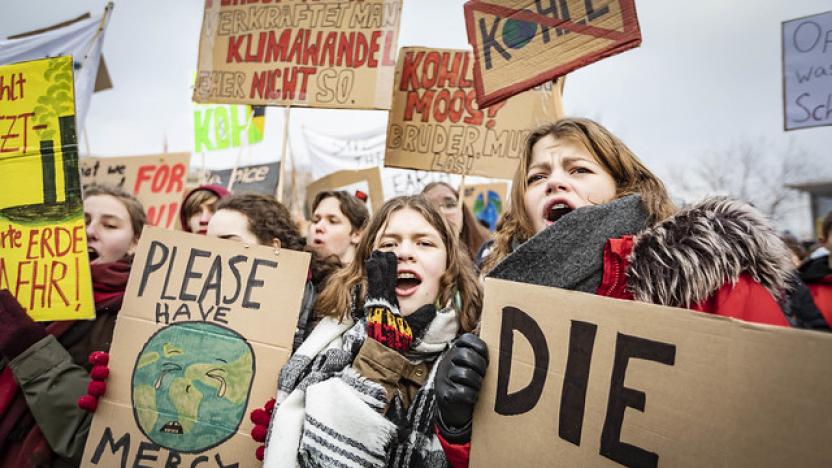The greatest threat faced by this generation is climate change. But what can we do to tackle the problem? Wait for politicians to act and hope that they’ll make the right decisions — before it’s too late? Waiting certainly hasn’t proven to be an effective solution so far, with words so far being followed with little, if any, effective action. This means it’s more important than ever to take matters into our own hands.
Many people feel that the issue of how to fight climate change is just too vast for individual actions to really make a difference. But is that really the case?
At RESET, we don’t agree. We’ve come up with 12 simple tips on how you can not only reduce your own carbon footprint by making both small and big changes, but also put pressure on politicians to step up and do the right thing.
1. Switch to 100 percent green power
Still haven’t switched to a green energy provider? Then now’s the time. The use of energy represents by far the largest source of greenhouse gas emissions caused by human activity. Around two-thirds of global greenhouse gas emissions are linked to the energy sector.
Switching to renewables has multiple positive impacts: by converting to green electricity, you support the phase-out of coal, do your bit to accelerate the move to renewable sources and directly reduce CO2 emissions.
2. Save energy
It might not sound like the most original-sounding tip around, but it’s as relevant as ever. Saving energy not only saves you money — it also helps to cut emissions too. From the RESET archives, check out our practical guide to see how you shape up when it comes to your own daily energy efficiency: 11 Tips for Saving Energy at Home
3. Optimise your diet
According to FAO data reported by Deutsche Welle, 14.5 percent of all human-caused greenhouse gas emissions are caused by the farming of livestock. As well as emitting carbon dioxide (CO2), this industry also releases toxic methane and nitrous oxide, both of which are considered to drive global warming. Globally, the livestock industry produces more greenhouse gas emissions than all cars, planes, trains and ships combined. That doesn’t mean that everyone has to become vegan or vegetarian; even a small shift in diets, with a reduction in meat and dairy products and more plant-based foods, could reduce the pressure that agriculture places on the environment.
When buying fruits and vegetables, try to buy organic wherever the options (and the price) will allow. Organic foods are usually not only healthier because they contain fewer harmful substances, but growing them also protects the environment and the climate. You could even go one step further and help support local organic farmers by signing up to receive a veggie box directly from people who grow the food nearby, thus also helping cut down on the emissions caused by transporting produce throughout the world.
4. Avoid plastic wherever you can
Plastic is the ultimate all-round material and is therefore present in pretty much every aspect of our lives. But the durability of the material (which also makes it so popular) is of course also its most drastic disadvantage: we’re struggling to get rid of it. Plastic has found its way pretty much everywhere — on streets, in rivers, on the beach, in cosmetics, in wastewater, in our clothing — even in the air we breathe. And, there’s also a close connection between climate change and our massive global plastic problem. Almost every plastic is produced from fossil fuels, and in every single phase of its life cycle, plastic emits greenhouse gases. But there are already a lot of alternatives available. Read more here: We Can Reduce Plastic Pollution by 80 Percent by 2040 – And Here’s What Needs to Happen.
5. Sharing is caring!
If we own less and use more things collectively, we need to produce fewer things — and that saves on resources. Sharing cars, exchanging clothes, lending and borrowing tools — there are multiple different possibilities for collective consumption and they’re already being used by millions of people worldwide. Think of popular brands like Miles and Vinted for places to start.
6. Shrink your digital footprint
Every search query we type, every email we send or receive, and every song we stream causes CO2 emissions. Why? Because energy is needed for all the data we’re producing — and a lot of it! By 2018, the use of digital technologies had overtaken even the aviation industry in terms of CO2 emissions. It’s time to tackle the root of the problem. Let’s start with the number one power-guzzler in the digital world: streaming video services. In order to flicker across our screens on-demand, streaming video services need a lot of bits and bytes. One single provider (Netflix) currently consumes 15 percent of the world’s internet bandwidth. So if you’re a fan of a certain playlist or show — maybe try downloading them (legally) rather than streaming them anew each time you go back to them. You can also help by doing something as simple as switching to a “green” search engine such as Ecosia that plants trees, avoiding purchasing electronic devices that you don’t need, and even just cleaning up your email inbox can help to fight climate change.
7. Avoid flying
There is, of course, no other means of transport that gets us from A to B as fast as the plane. But at the same time, there is hardly any other activity in which a single person can emit such large quantities of CO2 in such a short time. The simple solution is simply to avoid air travel. By doing so, you’ll avoid that icky feeling you get when you take unnecessary flights because you know how bad it is for the environment. (The Swedes even have a word for it: flygskam).
For those few flights that you simply cannot avoid, there is of course always the chance to offset your emissions. It doesn’t cancel out the damage done, but at least it goes some way towards neutralising flying’s negative impact. The Swiss non-profit Myclimate and the company Atmosfair are just two options.
8. Make sustainable investments
You take your money to a bank and they look after it until you need it? Wrong! Your bank works with the money — perhaps even supporting arms trades and environmental destruction. But there are also sustainable alternatives, banks who are transparent about what happens with your money and where you can even decide where your money should work, for example, in renewable energies or reforestation projects. To find your local sustainable bank, check out the list of member banks of the GABV (the Global Alliance for Banking on Values). Sustainable investments consider social, ethical and ecological aspects as well as financial aspects, and that pays off, both for you and in the fight against climate change.
9. Get on your bike!
Still the number one form of sustainable transportation — the mighty bicycle. In the age of electric scooters, electric mopeds and whatever else may come — when it comes to protecting the climate, the humble pedal-powered bicycle is still way ahead. In most cities, on a bike, you can get from A to B faster than by car, bus or train. Especially with the newest cycling apps on the market: App Lets Cyclists Ride Through the City on a Green Light Wave.
10. Protect our forests and plant more trees
It has long been known how important forests are both for the microclimate in individual regions and for the global climate as a whole. They “feed” on CO2 and convert the climate-damaging gas into oxygen, which is vital for our survival. A research team at ETH Zurich has compiled some fascinating figures: two thirds of man-made CO2 emissions could be removed from our atmosphere if we were to reforest 900 million hectares of forests worldwide. Forest restoration “isn’t just one of our climate change solutions, it is overwhelmingly the top one,” said the lead scientist, climate change ecologist Tom Crowther. On the website of the Crowther Lab you will find lists of forest restoration organisations that you can support.
We should not only focus on reforestation measures, but also stop the deforestation of huge areas at the same time. European meat production also plays a decisive role in this context. Poultry, pigs and cattle are mostly fed with soya grown on Brazilian soil on which tropical rainforest was previously found. So, you can make a contribution by limiting your meat consumption. Beyond that, you can also support international organisations that promote the rights of indigenous people living in the Amazon (such as Amazon Watch), who are the ones best placed to protect forested areas by monitoring and reporting on illegal logging.
11. Make informed decisions as a consumer and as a citizen
At first glance, huge corporations might seem distant. But we still have the power to reach them by exercising our rights as consumers and as citizens. We can consume more carefully and consciously, giving preference to companies that act responsibly, supporting organisations that hold companies to account for their environmental practices, and we can use our cross on the ballot paper to decide who should set the political course in the future. Find out who is committed to climate protection in your city, region and country and make your vote with the environment in mind.
12. Go out on the street and make your voice heard!
Countless reports have stressed the urgency of taking action now if we are to stand a chance of halting the most devastating consequences of climate change. Far too little has happened so far. But the voices from civil society are getting louder. Fridays for Future is a huge movement in which people regularly take to the streets to demonstrate for more political action to protect the climate. And, despite controversy, Extinction Rebellion is another group using civil disobedience and non-violent resistance such as setting up blockades in cities across Europe. Join them and take a stand for the climate today!
Updated in September 2023 by Lana O’Sullivan









